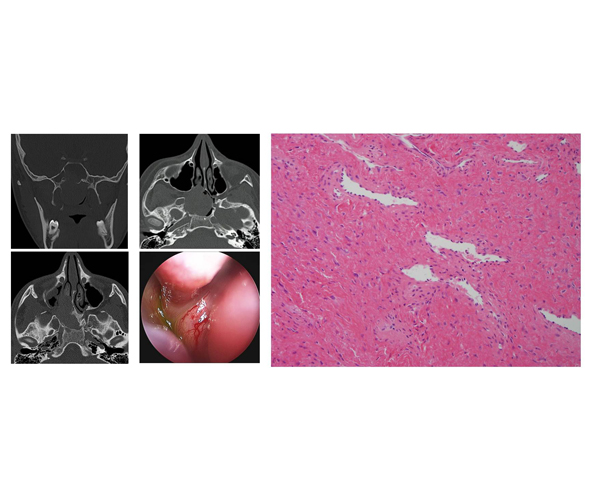1.
Draw the vascular supply to the nasal mucosa, noting the vessels of origin. What is Kiesselbach’s plexus?
2.
What are local causes of epistaxis (sino-nasal pathologies)? Where does epistaxis most commonly originate?
3.
What laboratory tests will you order in evaluating a patient with recurrent epistaxis? What is the role for radiologic studies?
4.
Review the CT, endoscopic and histopathology images provided. What is your diagnosis?
5.
A patient presents to the ER with epistaxis. How do you proceed with history and examination?
6.
In evaluating a patient with epistaxis, you find the origin of hemorrhage to be at the anterior septal mucosa. How will you manage this patient?
7.
Discuss commercially available nasal packs and compare them. What absorbable nasal materials may also be used for hemostasis?
8.
What are some complications of nasal packing? What is toxic shock syndrome?
9.
What is the role of prophylactic antibiotics with nasal packing?
Reference(s):
Lange, J. L., Peeden, E. H., & Stringer, S. P. (2017). Are prophylactic systemic antibiotics necessary with nasal packing? A systematic review. American Journal of Rhinology & Allergy, 31(4), 240–247.
10.
Discuss systemic diseases that predispose to epistaxis. Also discuss the role of hypertension.
11.
Discuss topical nasal and systemic medications that increase risk of epistaxis.
12.
A patient with posterior epistaxis continues to bleed. Discuss and evaluate your options.
13.
Discuss construction of a posterior pack. What clinically significant issues must one consider when a posterior pack is placed (monitoring, duration and complications)?
14.
Discuss steps in endoscopic sphenopalatine artery ligation and anterior ethmoid artery ligation.
15.
Does hot water irrigation help with posterior nose bleeds?
16.
What is hereditary hemorrhagic telangiectasia? What are the medical and surgical treatment options?
17.
What is the role for IR embolization of epistaxis?
18.
Provide the group with an epistaxis management algorithm.


